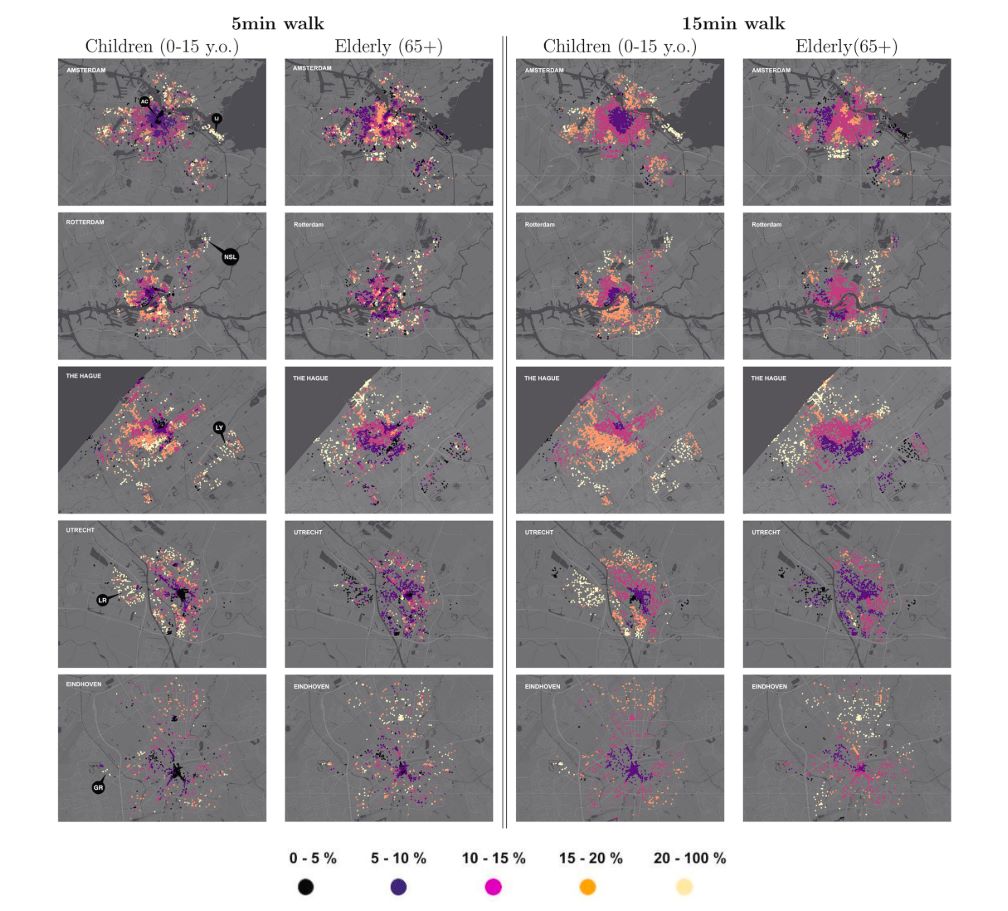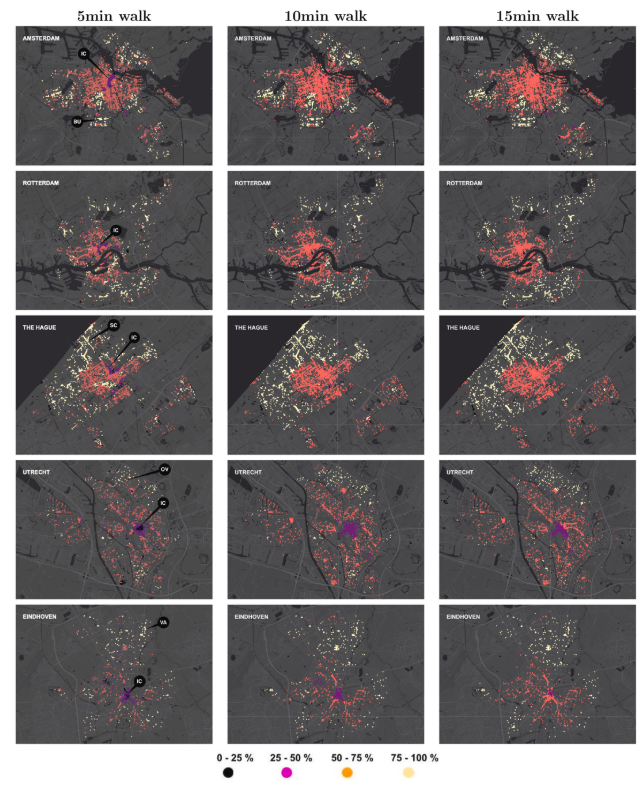Measuring spatial age segregation through the lens of co-accessibility to urban activities
What if we look at segregation not only in relation of where people live, but also in terms of how accessible different activity spaces are to different population groups?
Segregation is largely experienced during our daily activities outside of our home. The lack of mutual encounters and interactions between different population groups may jeopardize our goal of accessible and inclusive public spaces. Yet to date, segregation is almost exclusively evaluated in the residential space.
In their recently published article in Computers, Environment and Urban Systems, Vasileios Milias and Dr. Achilleas Psyllidis of the Urban Analytics group propose a radically new approach to measuring segregation in our daily activity spaces. Besides looking at how accessible different activity spaces are, they also consider how likely it is that people from different groups meet in these places. For this, they introduce a spatial “co-accessibility” index.
They applied this measurement principle in the context of spatial age segregation across the five most populated cities in the Netherlands, though it can be used in virtually any type of segregation in any spatial context. This approach can have practical value for urban planners, designers, and public health officials in their endeavors for more inclusive public spaces that promote well-being.
This work contributes to UN Sustainable Development Goals SDG3 and SDG11.
Read the full article here.



